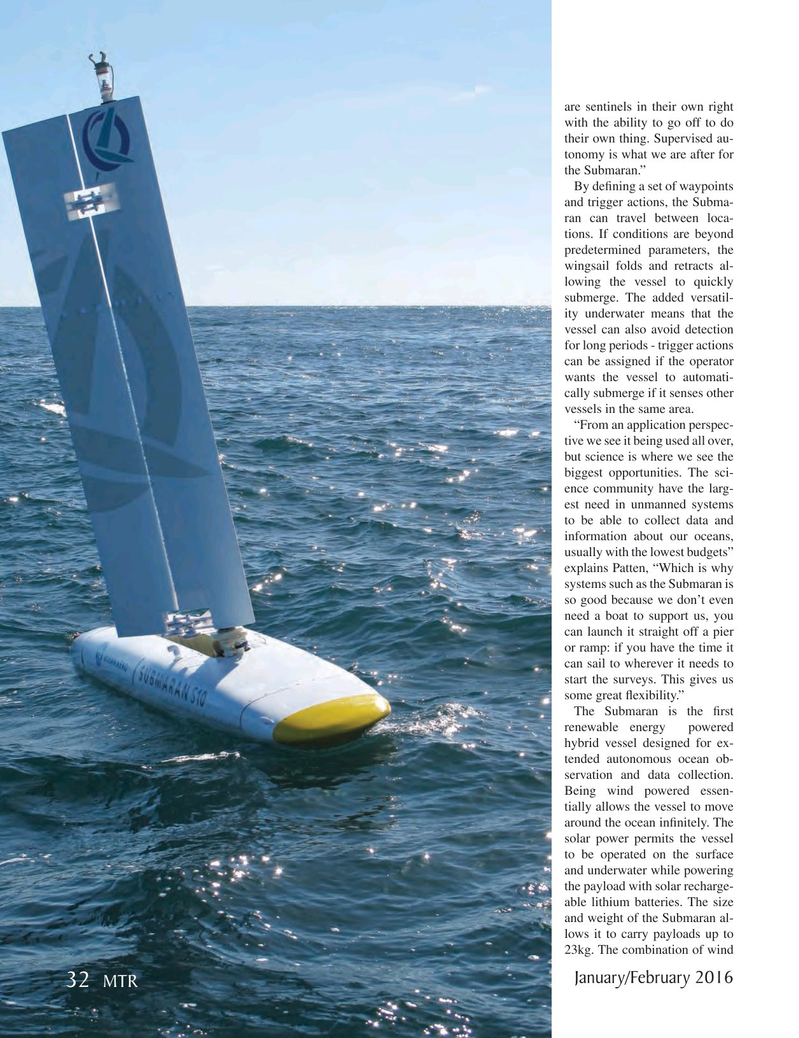
Page 32: of Marine Technology Magazine (January 2016)
Underwater Vehicle Annual: ROV, AUV, and UUVs
Read this page in Pdf, Flash or Html5 edition of January 2016 Marine Technology Magazine
are sentinels in their own right with the ability to go off to do their own thing. Supervised au- tonomy is what we are after for the Submaran.”
By de? ning a set of waypoints and trigger actions, the Subma- ran can travel between loca- tions. If conditions are beyond predetermined parameters, the wingsail folds and retracts al- lowing the vessel to quickly submerge. The added versatil- ity underwater means that the vessel can also avoid detection for long periods - trigger actions can be assigned if the operator wants the vessel to automati- cally submerge if it senses other vessels in the same area. “From an application perspec- tive we see it being used all over, but science is where we see the biggest opportunities. The sci- ence community have the larg- est need in unmanned systems to be able to collect data and information about our oceans, usually with the lowest budgets” explains Patten, “Which is why systems such as the Submaran is so good because we don’t even need a boat to support us, you can launch it straight off a pier or ramp: if you have the time it can sail to wherever it needs to start the surveys. This gives us some great ? exibility.”
The Submaran is the ? rst renewable energy powered hybrid vessel designed for ex- tended autonomous ocean ob- servation and data collection.
Being wind powered essen- tially allows the vessel to move around the ocean in? nitely. The solar power permits the vessel to be operated on the surface and underwater while powering the payload with solar recharge- able lithium batteries. The size and weight of the Submaran al- lows it to carry payloads up to 23kg. The combination of wind
January/February 2016 32 MTR
MTR #1 (18-33).indd 32 1/21/2016 2:56:56 PM

 31
31

 33
33
